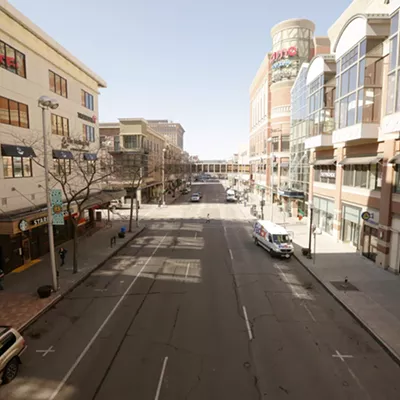In 2023, over 150 schools in Montana served Montana Marinara, a "picky eater approved" red sauce made with locally grown carrots, squash and onions.
It took supply chain funds from the U.S. Department of Agriculture and complex coordination between the state's Office of Public Instruction, farmer-owned food cooperatives, and a nonprofit community development organization just to feed Montana kids some veggies grown in Montana.
Call them dreamers, but some people don't think it should be that difficult to eat local food.
Earlier this month, on Friday, Feb. 16, the Northwest Food Hub Network hosted its third annual summit at Gonzaga University. The event brought together farmers, ranchers, distributors, processors, marketers, policymakers, university researchers, educators and health care workers to brainstorm and share experiences. They spoke in shorthand jargon, like "value chain coordination" and "resilient food chain infrastructure," but the question at hand was simple: How do farmers sell their food to people who live nearby?
The Northwest Food Hub Network is an umbrella organization that tries to strengthen and coordinate individual food distributors. It currently supports LINC Foods in Spokane, the Puget Sound Food Hub Farmers Cooperative and the Western Montana Growers Cooperative. Its goal is to create more opportunities to buy and sell local food so small farmers aren't competing against one another, but working together instead.
They talk about "making the pie bigger," a common economics metaphor. If all the opportunities to sell locally make up a pie with a small number of slices, competition increases. But if everyone works together to create more opportunities, everyone can get part of the pie.
When Charlie Michel, head organizer of the event, talks about local food, he quickly ends up discussing democracy. Farmer-owned food cooperatives are microcosms of the democratic process, relying on a voting system and majority rules agreement to make decisions about how to operate and where to sell.
Each participant of a small co-op has more power than farmers usually have as cogs in a big ag system. But it also means agreeing to prioritize the best interests of the group, even if it cuts against personal preference. That's one reason it's so hard to get growers and producers to agree to co-ops.
But selling food locally could give farmers more power to choose what they want to grow. Washington state exported $8 billion of food and agricultural products in 2022, including about 90% of its wheat and 70% of its potatoes, according to the state's department of agriculture. Both the price and the types of crops are determined by international markets, and farmers usually have little choice but to obey.
Michel and others in food hub networks envision a world where the default isn't exporting. Shorter shipping distances could cut down on the cost and environmental impacts of burning fuel. Plus, shorter supply chains are in less danger of being disrupted by wars, tariffs or pandemics.
Local food also gives consumers more options of what to buy and eat. Instead of having one option for white potatoes at the grocery store, imagine being able to choose among five options with different growing techniques, flavor profiles and price points. Local food markets are also usually more welcoming to unique products, like lentil flour or purple tomatoes, therefore encouraging smaller agricultural entrepreneurs.
Farmers want to grow what people want to buy, so a huge emphasis at the Food Hub Network summit was education. Staff from programs like Farm 2 School shared about getting local produce into classrooms and cafeterias. Aaron Smith, director of nutrition services for Seattle Public Schools, talked about seeking out local suppliers, saying local products can sometimes be the less expensive option.
Santos Guadarrama, a farmer and co-owner of LINC Foods, explained the benefits of working in a co-op like LINC. On a panel of national experts, Cheryl Bilinski from Cornell University shared that the New York governor signed an executive order requiring the state's agencies to source at least 30% of their food from local producers, which got audible gasps of envy from listeners at Gonzaga.
Changes to the state, federal and international policies that determine where food goes are slow. And not everyone is going to get on board. My own grandfather, who grew hundreds of acres of feed corn in Nebraska, used to say that farmers were the biggest gamblers in the world. They need as many safety nets as possible, like huge harvests, guaranteed prices and predictable markets. It's unclear if Big Ag could ever change, or if it should.
But the dreamers at this year's summit think it's possible that in a few years or decades, local food won't be just a niche. ♦






















